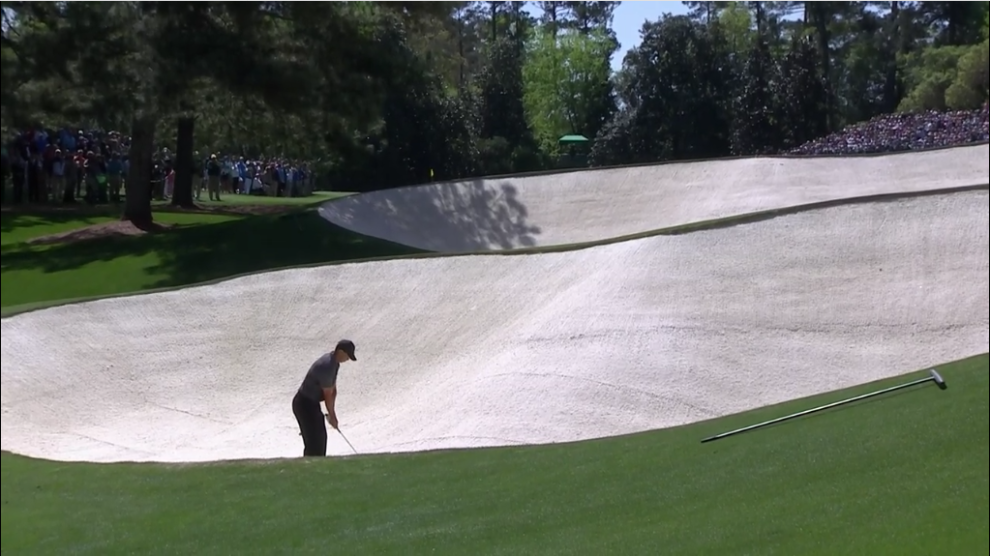Augusta National Golf Club has some of the most distinctive bunkers in the world. They're known in part because of their placement and shaping, but they're most known for their white sand. The white sand bunkers look unlike anything most any golfer will ever experience playing the game.
However, the bunkers at Augusta National Golf Club didn't always have white sand in them. The white sand, labeled as a Spruce Pine Feldspar variety of sand, was introduced into the bunkers until the 1975 Masters. The sand is naturally soft, and it's difficult for a player to hit through the sand without putting a good thump on it with some force in the explosion shot.
The Masters contestants love the sand, though, because while soft on the top layer, it is very firm in the compacted lower layers. Balls rarely, if ever, plug in the bunkers at Augusta National Golf Club. However, if it rains significantly, the sand compacts and gets even firmer, making bunker shots particularly difficult.
The white sand in the bunkers at Augusta National comes from North Carolina, namely the Spruce Pine mining area of the northwestern portion of the state, near the Blue Ridge mountains. That region has been producing quartz and feldspar, which is a slightly less pure version of quartz, since the Colonial Era. Americans began trying to mine the region in the 1800s but had poor luck. The 1903 installation of winding railroad tracks in the region created a way out for the sand, and mining picked up dramatically. What is now known as the Spruce Pine Mining District is 250 square miles in size.
The crystal white sand is a byproduct of the mining process that extracts feldspar with the goal of separating aluminum from the quartz. Effectively, it's waste that comes out of mining for other metals and materials.
While it might be a waste product, the sand is so pure that it's similar in grade and makeup to the sand used to help fuel modern electronic devices with microchips. The sand is in high demand among electronics manufacturers. The most pure version of the sand is sold off for chips in phones, tablets and the like. The sand with slight imperfections locked in the quartz is what's used on beaches and at Augusta National Golf Club.

